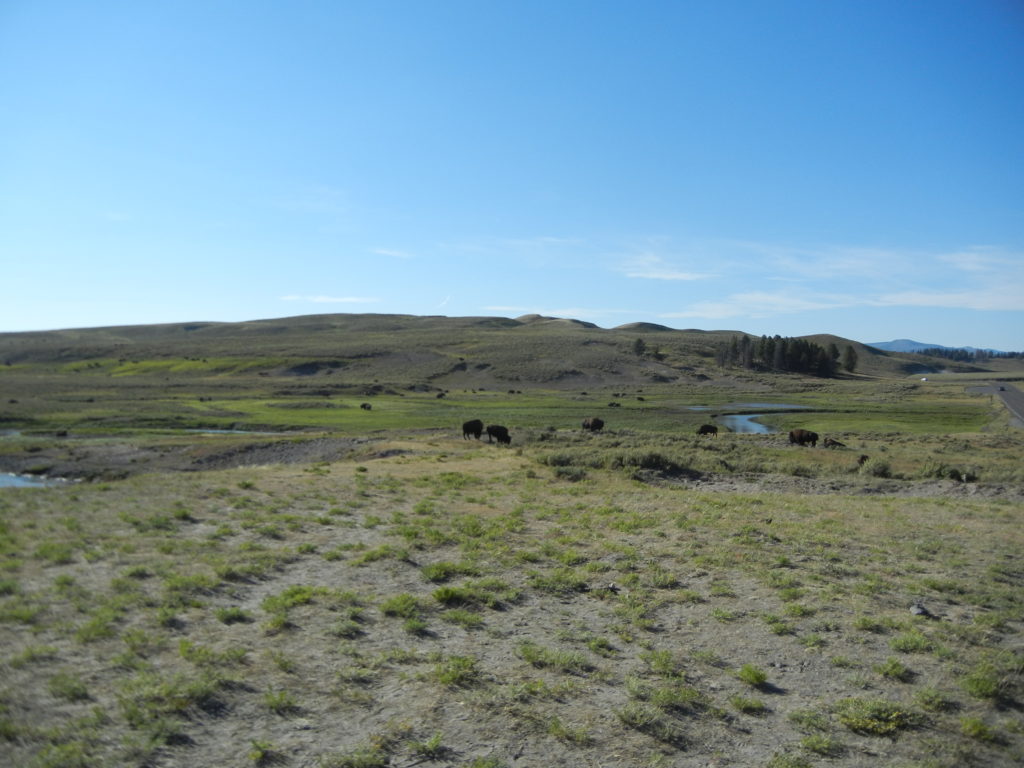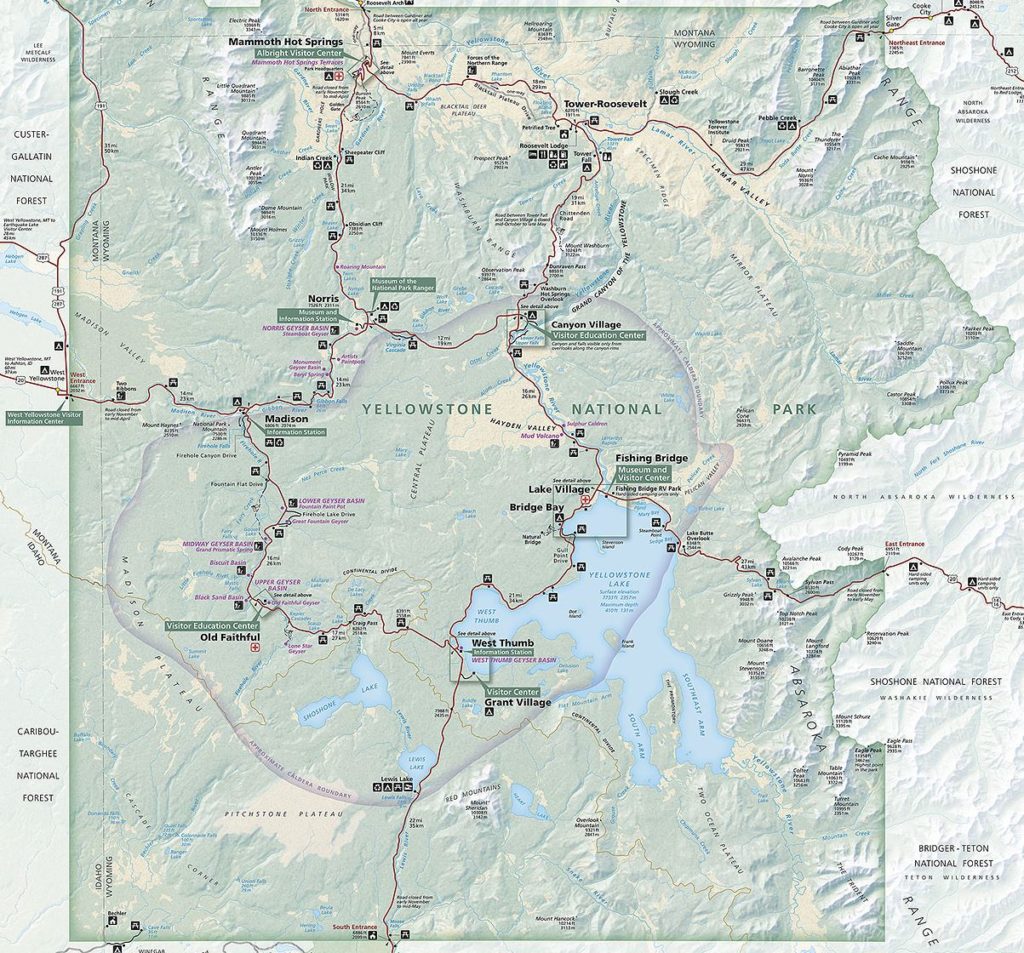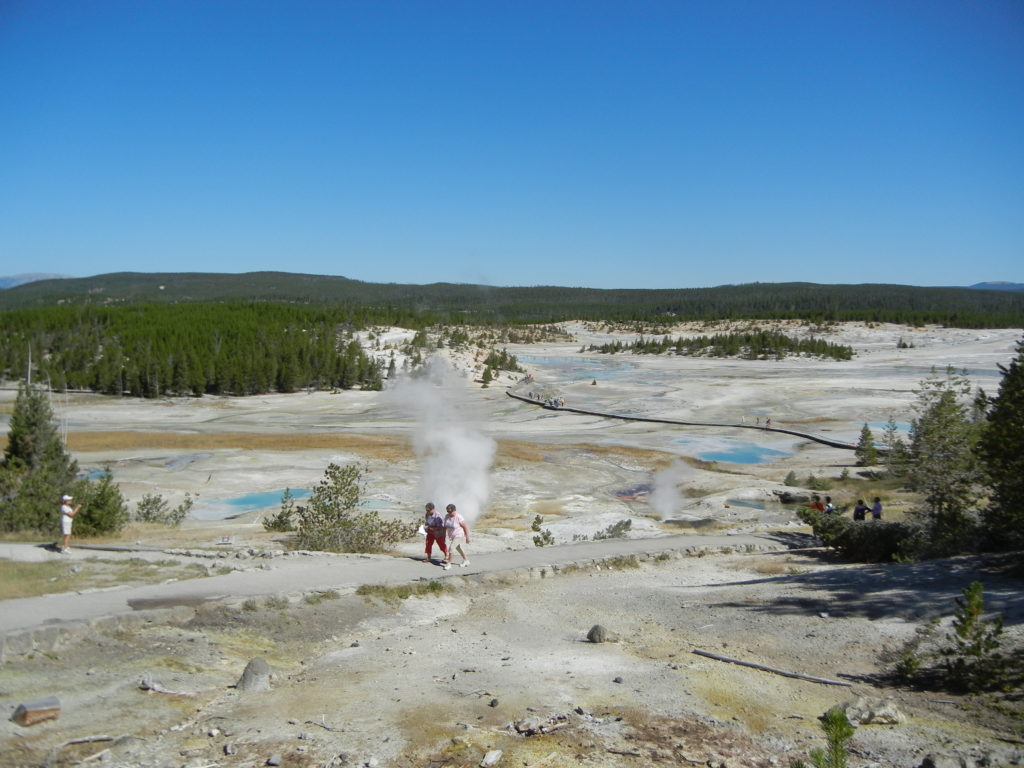Yellowstone (in the fall)
NATIONAL PARK
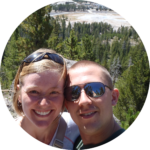
By DIENEKE
note: I have had the great fortune to visit Yellowstone twice! Check this post out for a completely different experience of Yellowstone (in the spring).
Yellowstone is the oldest of our nation’s National Parks and ranks among the top 5 for number of visitors/year. It is also an incredibly large (> 2 million acres) and diverse landscape that features dramatic canyons, waterfalls, alpine rivers, forests, hot springs and geysers! It’s also home to hundreds of animal species including bears, bison, elk, antelope and the ever elusive grey wolf.
With so much to see, it is impossible to do it all, especially in the mere two days that we had. It can be easy to get overwhelmed with the options, so we developed a “must-see” list and set out to absorb as much of this epic park as we could.
Our home base was the Evergreen Motel in West Yellowstone: clean, friendly, economical lodging just minutes from the West Entrance.
DAY ONE
Upon entering from the west, we followed the Madison River to the Grand Loop Road, which we took north, clock-wise. We were itching to start hiking and pulled over at the Terrace Spring Trailhead just past Madison Junction. This is a 1/3 mile easy loop that’s a quiet introduction to hot springs and bubbling paintpots. And just a short distance away we stopped at Gibbon Falls which offers a picnic area and great views of the falls.
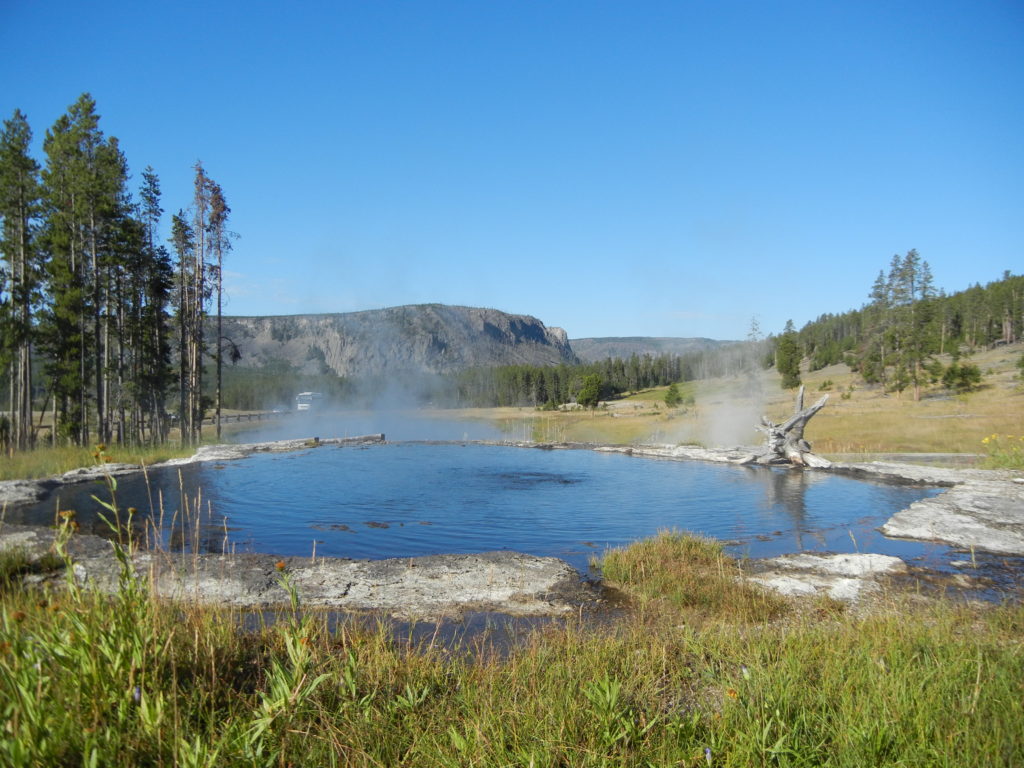
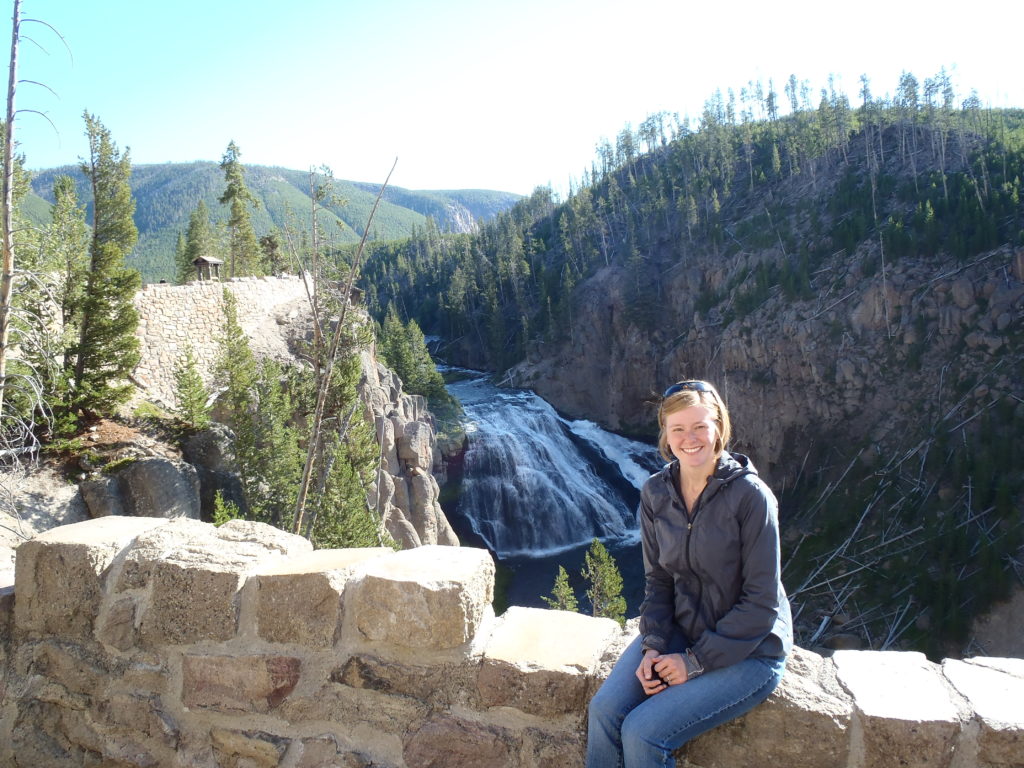
We saw a few more visitors at Norris Geyser Basin and Museum at Norris Junction but the longer 2.9 mile Norris Geyser Basin Trail distributed us pretty well. Norris is one of the hottest and most acidic of Yellowstone’s hydrothermal areas. Many hot springs and fumaroles have temperatures above the boiling point of 212 degrees Fahrenheit! This is where we saw the first of many warning signs to stay on the boardwalk and designated trail!! It is also part of one of the world’s largest volcanoes near the intersection of three major faults. Two of these faults intersect with a ring fracture from the Yellowstone Caldera eruption 640,000 years ago. This is one dynamic place!


From here, we headed to Canyon Village which was packed, so, we decided to book it to the canyon as it was still pretty early and we hoped to beat this crowd there. Click here for other tips on beating the crowds.
We took South Rim Drive straight to the end at Artist Point and our plan paid off. We were able to enjoy this dramatic wonder almost entirely by ourselves! The Grand Canyon of Yellowstone is roughly 20 miles long, formed by erosion of the Yellowstone River. The 109-foot Upper Falls is upstream of the 308-ft Lower Falls. Artist Point has parking and restrooms for easy access to a phenomenal view of the Lower Falls. But, as is our strategy, we wanted something a little more off-the-beaten trail, so we took Falls Brink Road to Brink of the Upper Falls and then the North Rim Trail to Brink of the Lower Falls which afforded different views of the canyon’s power, color, geology and even wildlife (saw some beautiful birds away from the din of the crowds).
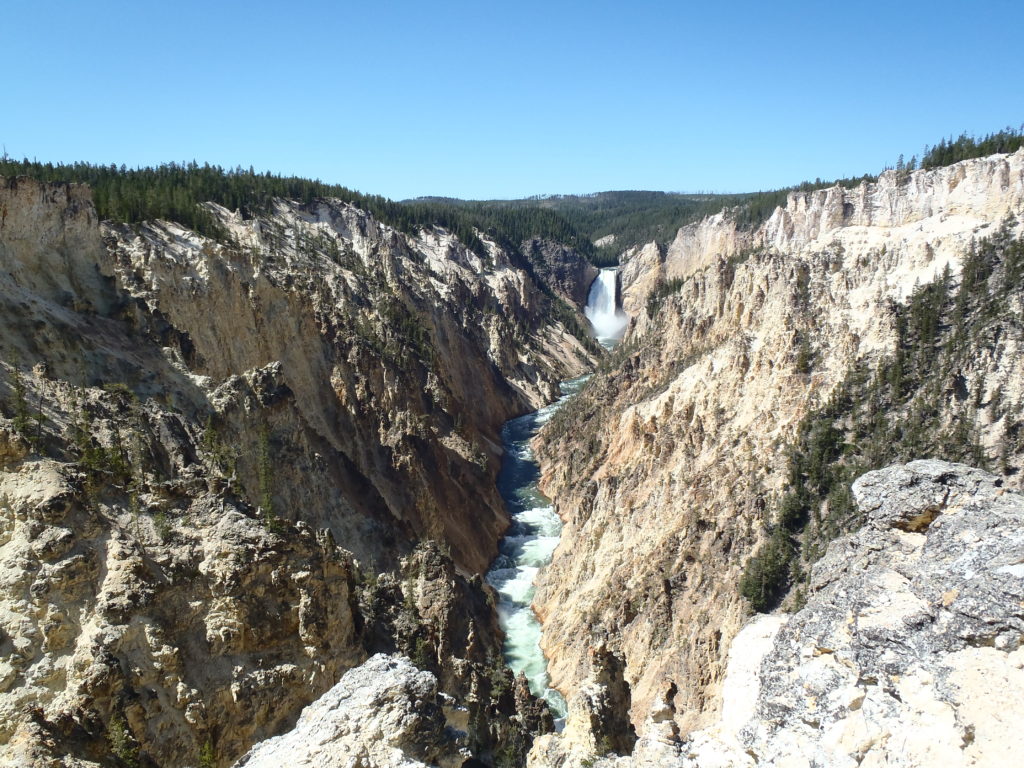

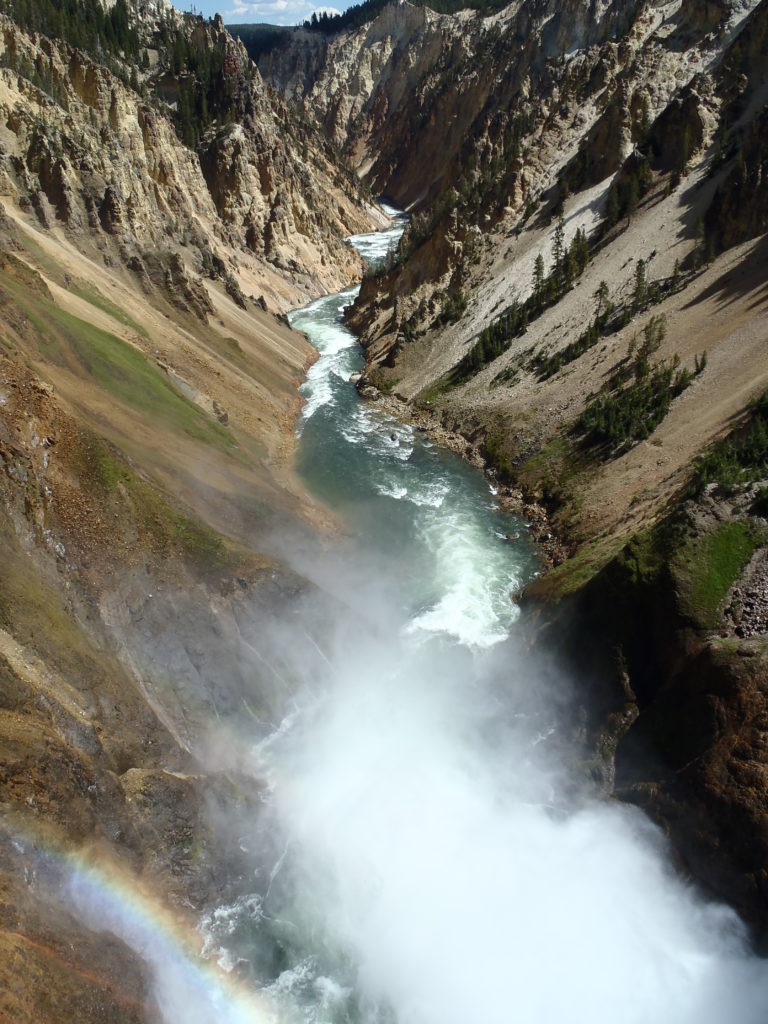
After these awe-inspiring views, we double-backed to Canyon Village to check out Canyon Lodge which still boasts some of the coolest light fixtures I’ve ever seen!
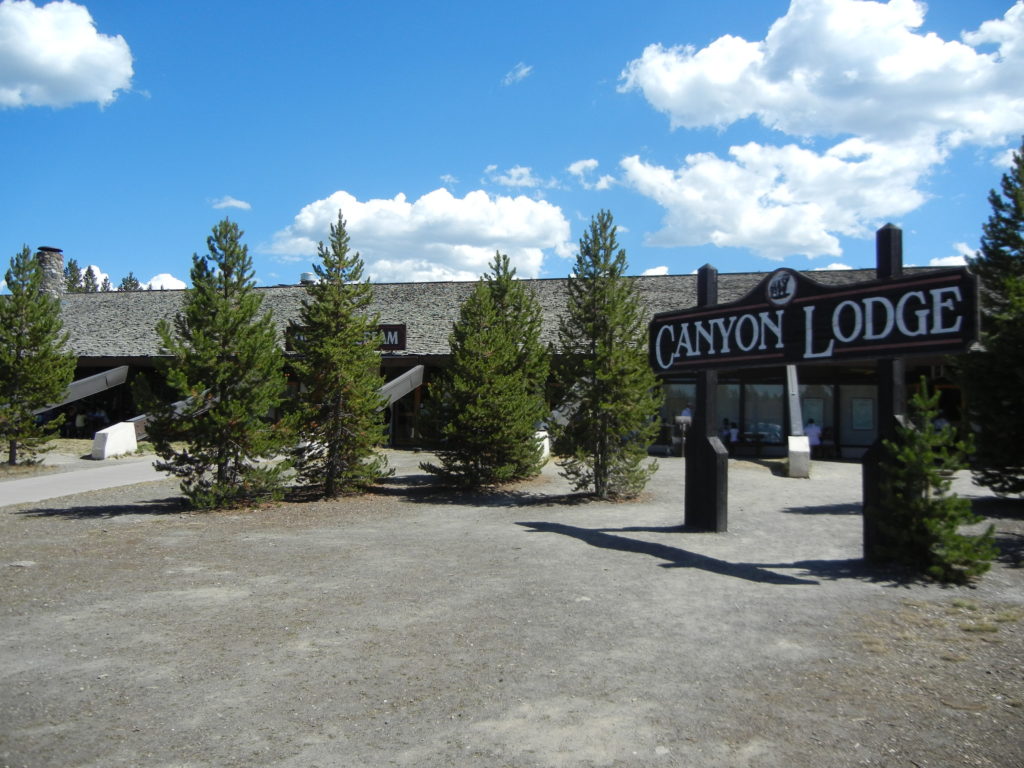
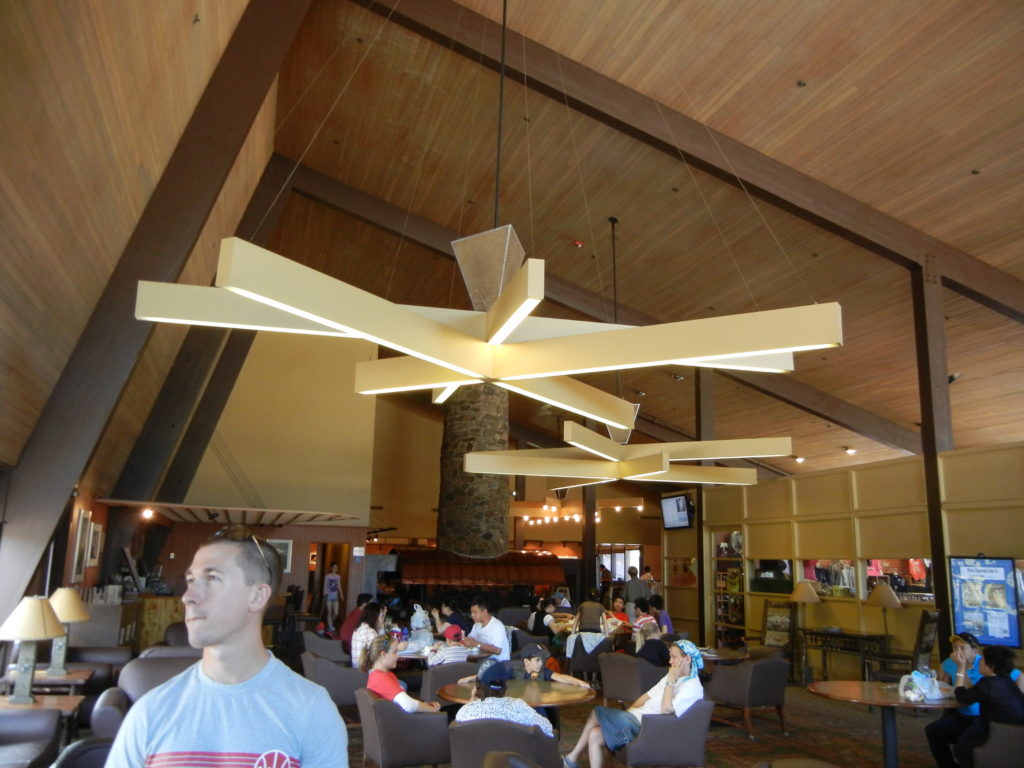
Traveling north from Canyon Village, we took Grand Loop Road, Canyon-Tower to, you guessed it, Canyon-Tower (so much can be inferred from NPS naming!). This also lead us through Blacktail Deer Plataeu which was sparsely visited but held enormous views and bison herds without the traffic jams! I would highly recommend this route to Mammoth Springs.
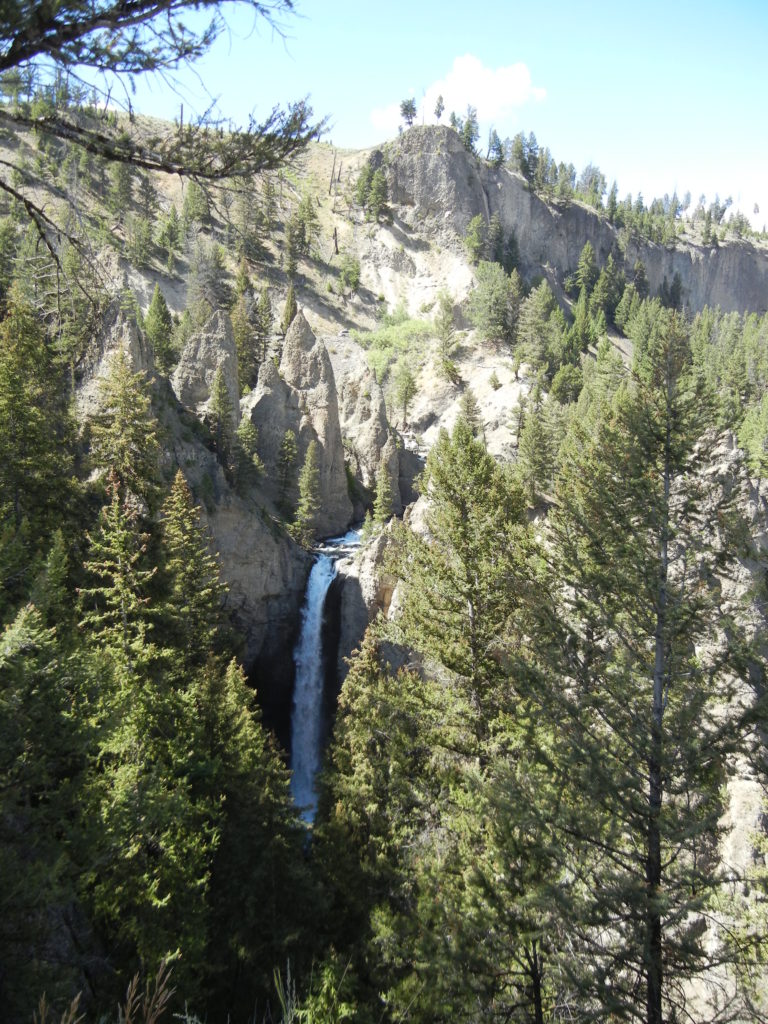
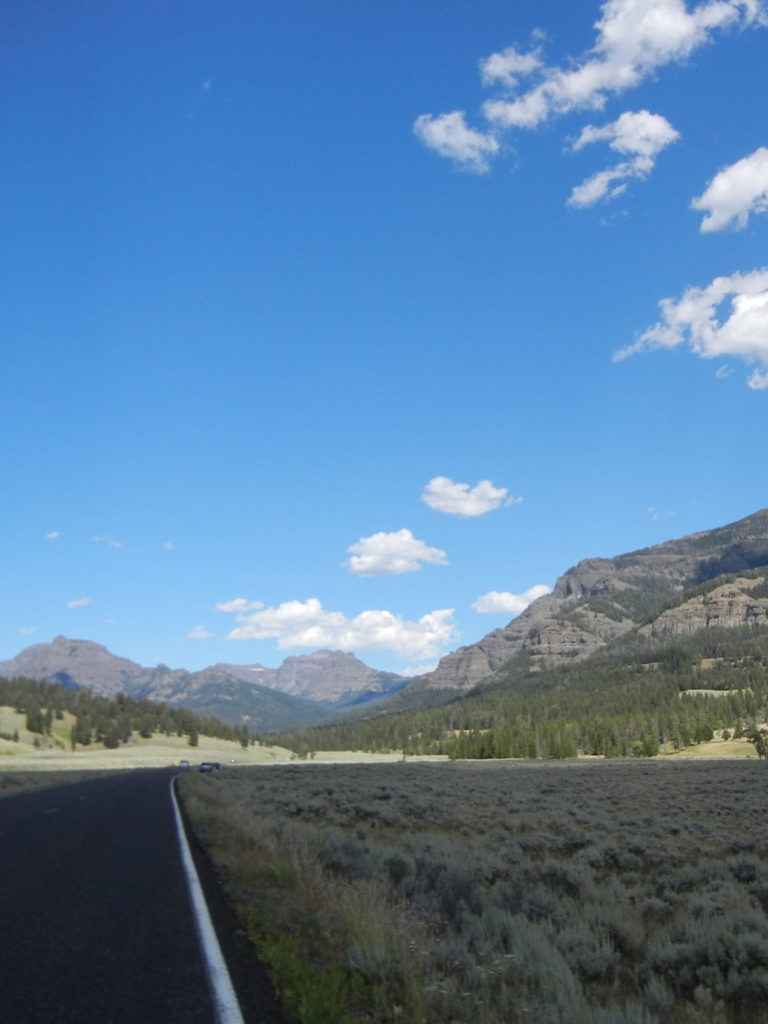
We ended Day One in Mammoth Hot Springs. There’s history abound in the thoughtfully restored Fort Yellowstone that includes the Albright Visitor Center, offices and employee housing. In the late 1800’s soldiers arrested poachers, educated visitors, provided medical care, managed wildlife, fought fires and expelled squatters. We didn’t have too much time to explore the architecture but hiked all over via Mammoth Hot Spring Trail. This is a collection of boardwalks, steps and paths that meander around the hot springs, giving up-close views of the colorful hydrothermal features. The trail from Lower to Upper Terraces is considered strenuous but the views are worth it!

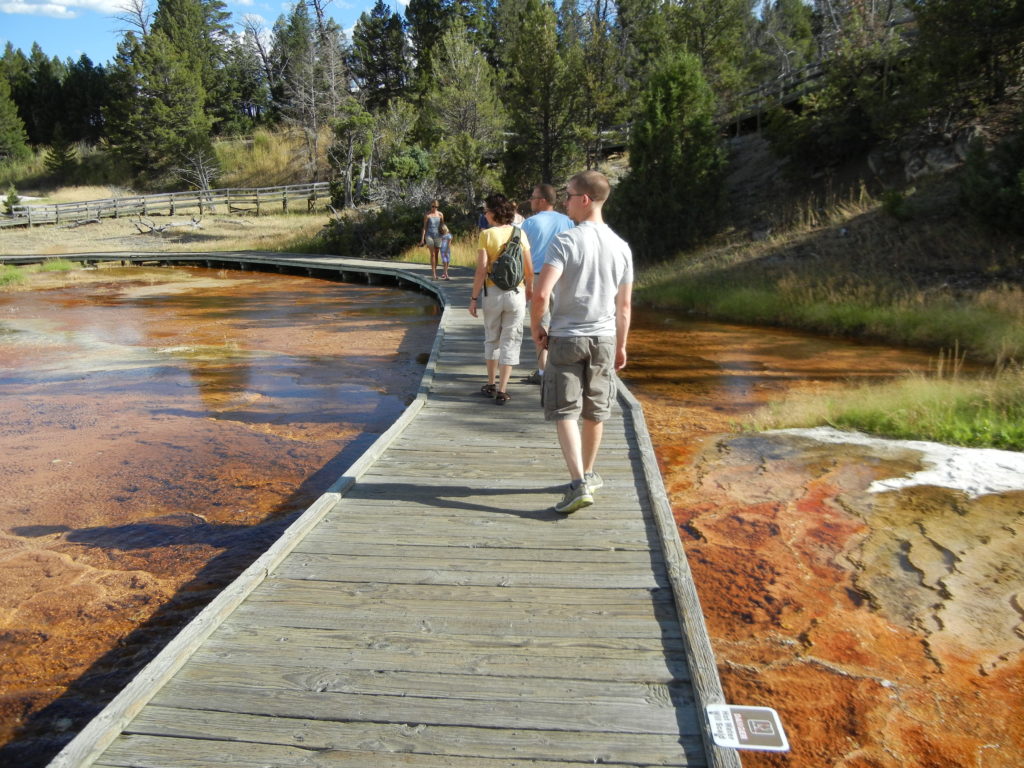
Heading south of Grand Loop Road, Mammoth-Norris, we saw the sun set on a herd of elk and shadows play on Sheepeater Cliff.
DAY TWO
Sun up and we were out to see some more Yellowstone “classics”: Grand Prismatic and Old Faithful. This time, we headed south at Madison Junction, counter-clockwise and took the short scenic drive through Firehole Canyon that took us past 800-foot thick lava flows to a viewing area of Firehole Falls, a gushing 40-foot waterfall!
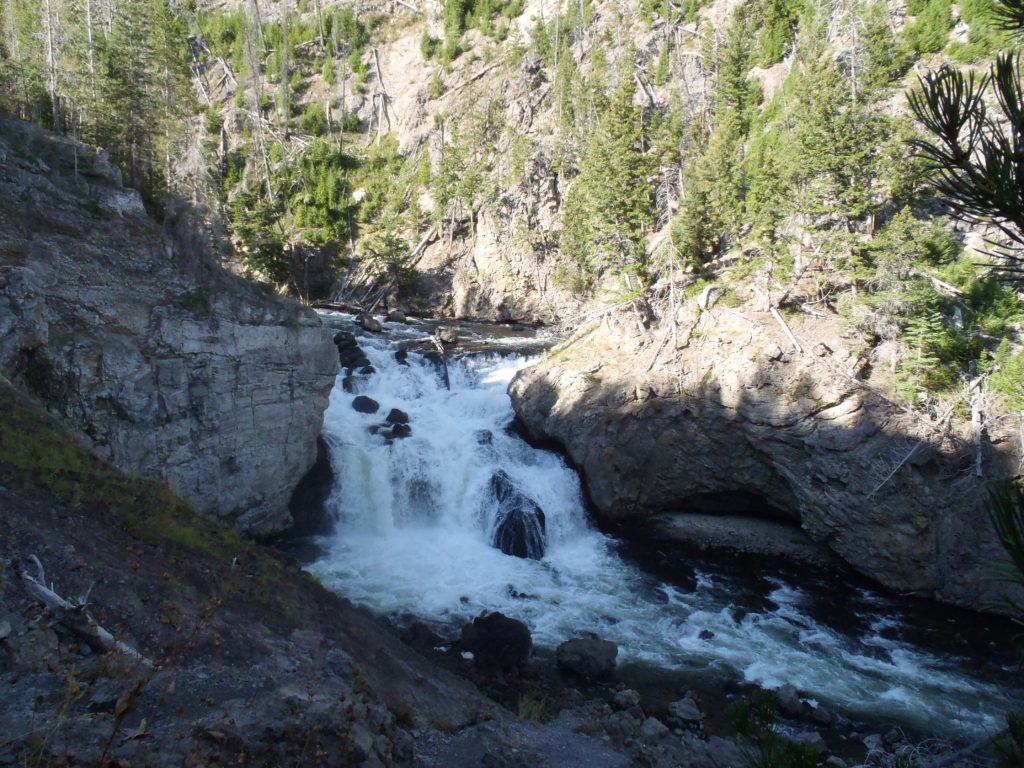
Continuing south, we stopped at Fountain Paint Pots Trail, which I would highly recommend! It is an easy 0.5 mile loop boardwalk and you get to see all four of the parks major hydrothermal features: fumaroles, geysers, hot springs and mudpots! Fountain Paint Pot is one of the most famous mudpots in the park.
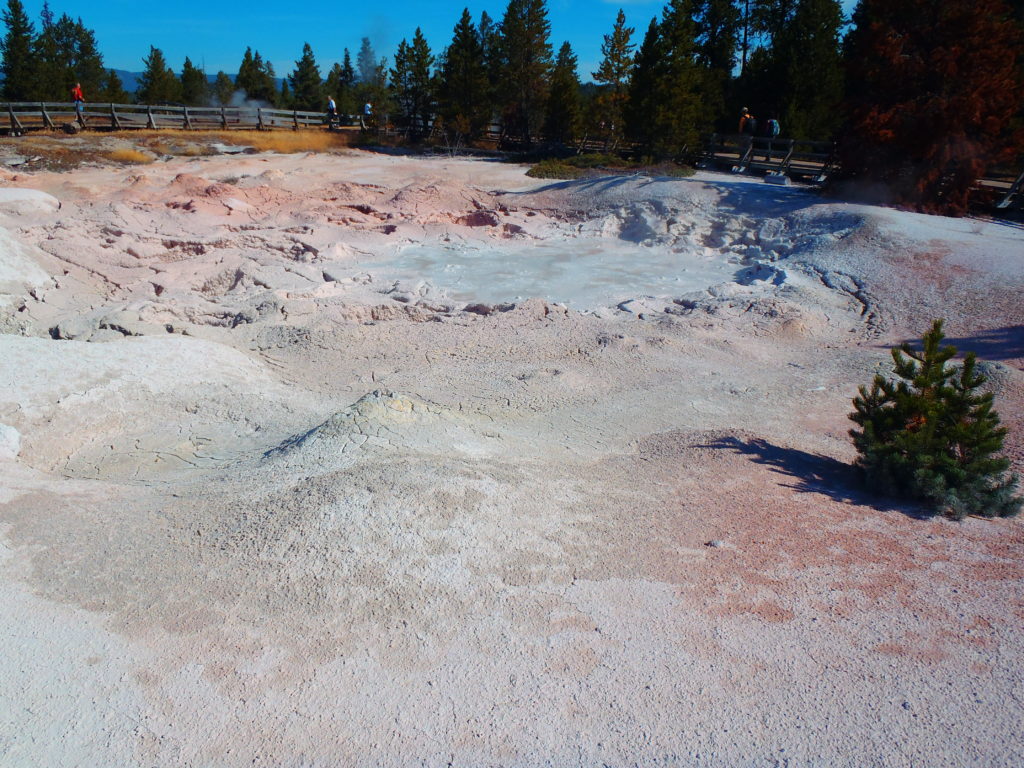
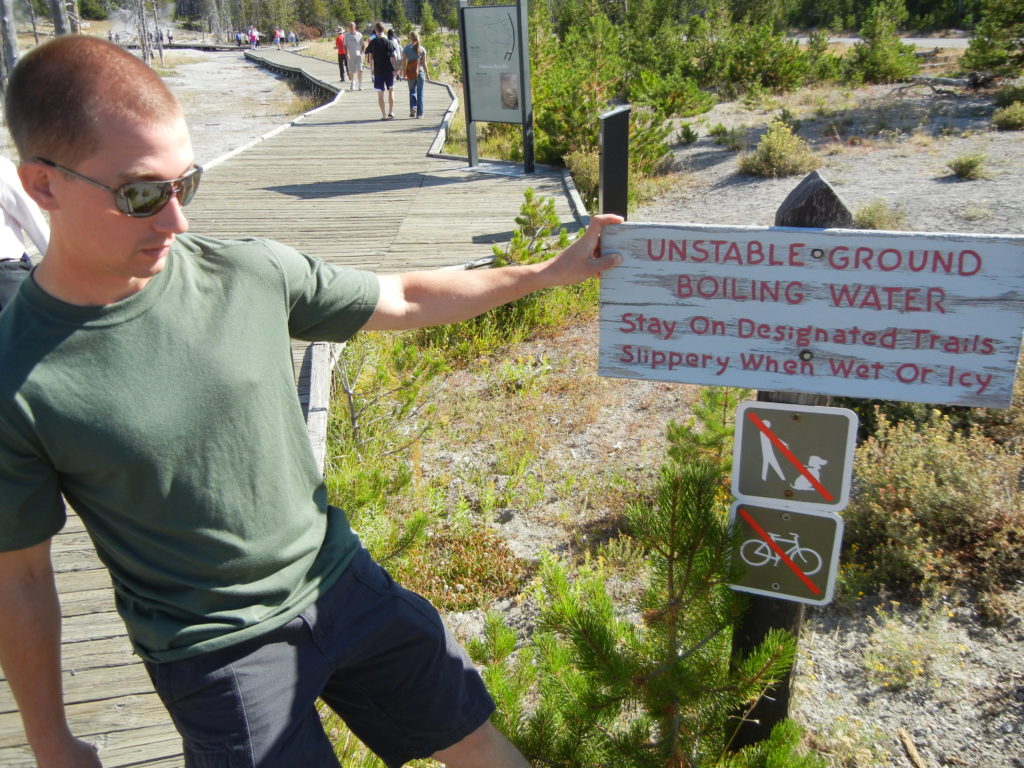

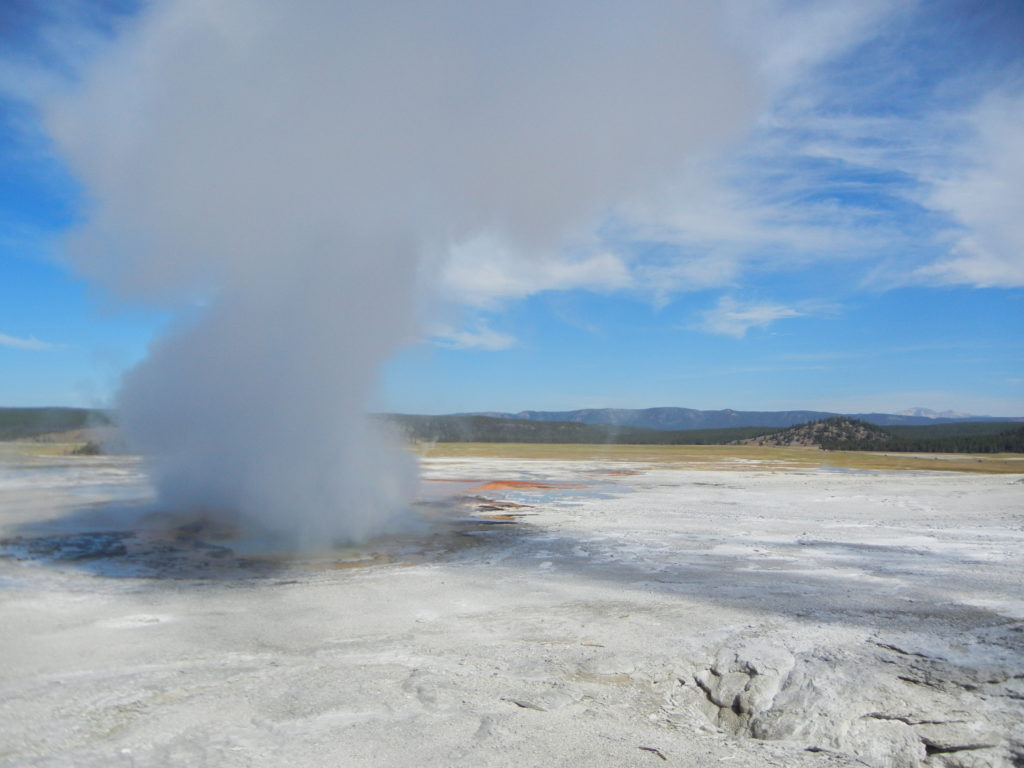
Before reaching Midway Geyser Basin, suspense rising! we took the 3-mile one-way side road: Firehole Lake Drive. We weren’t quite on time with the Great Fountain Geyser or White Dome Geyser but did enjoy the boardwalk around Firehole Lake itself.
Next up was the fully accessible 0.5 mile Midway Geyser Basin Trail. Quite a few folks to navigate around here but what a glorious lead up over Firehole River, through Excelsior Geyser/Crater, past Turquoise and Opal Pools to the spectacular Grand Prismatic Spring. The yellow, orange and brown colors encircling the hot spring are caused by thermophiles: heat-loving microorganisms. These microbes contain colorful pigments that allow them to make energy from sunlight and thrive in the harsh conditions of hot springs. It feels like being in a sci-fi movie!
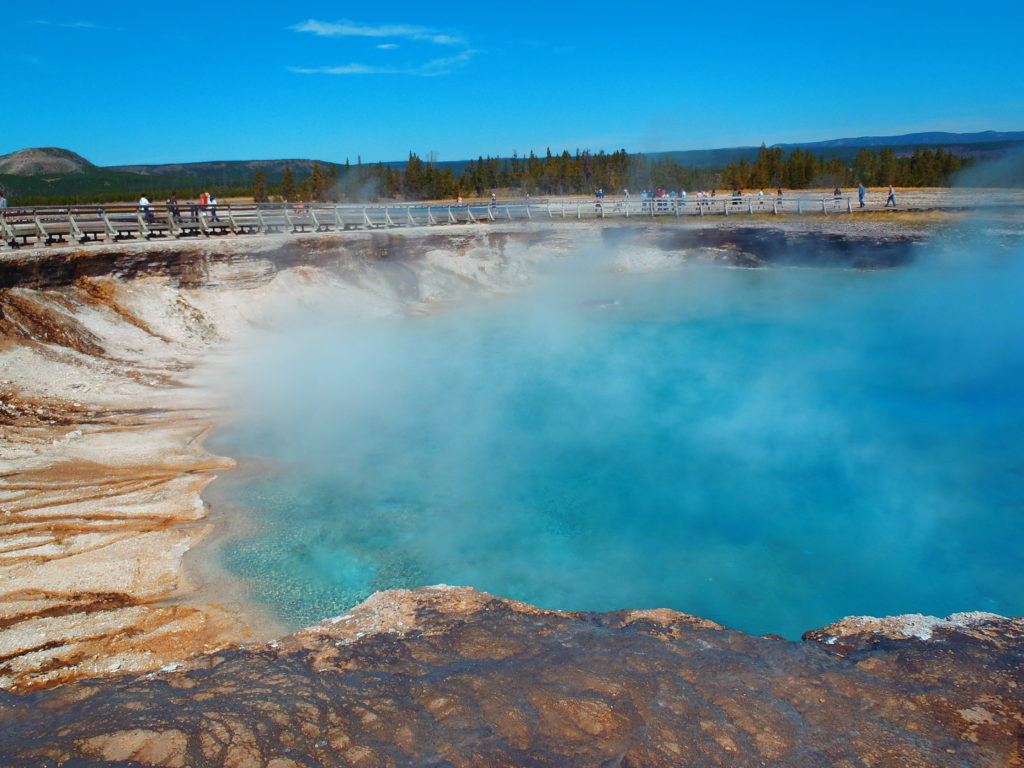

Continuing south, we braced ourselves for the main attraction: Old Faithful. This definitely felt more Disneyworld-park-like than anything we’d experienced thus far, but with the predictability and accessibility, it’s hard not to capitalize. So, we staked out a place for the 12:30 “show” but then hightailed it outta there to climb up to Observation Point Trail, a 1.6 mile out-and-back trail with a commanding view of the Upper Basin and Old Faithful. We continued west to Solitary Geyser and then back down to the Upper Geyser Hill Trail boardwalk, heading Northwest until we got to Sentinel Geyser: ending at approximately 4.5 miles when back at Old Faithful Visitor Center. The Upper Geyser Hill Trail is good for all skill levels and features dozens of interesting features with corresponding educational reader boards.
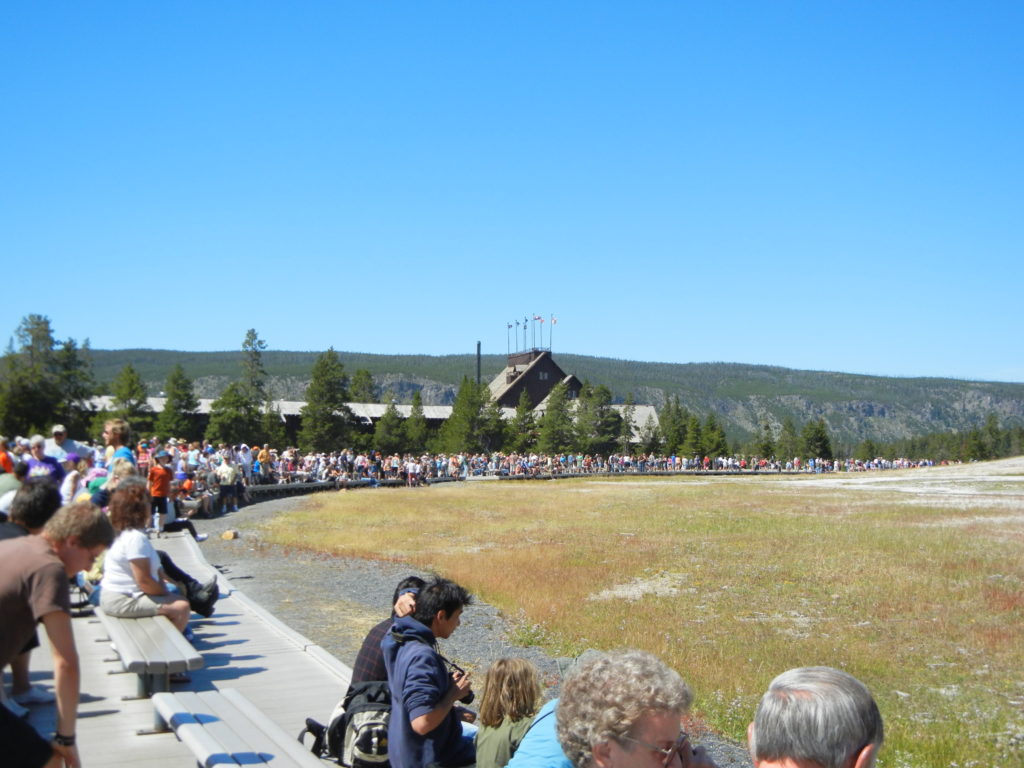
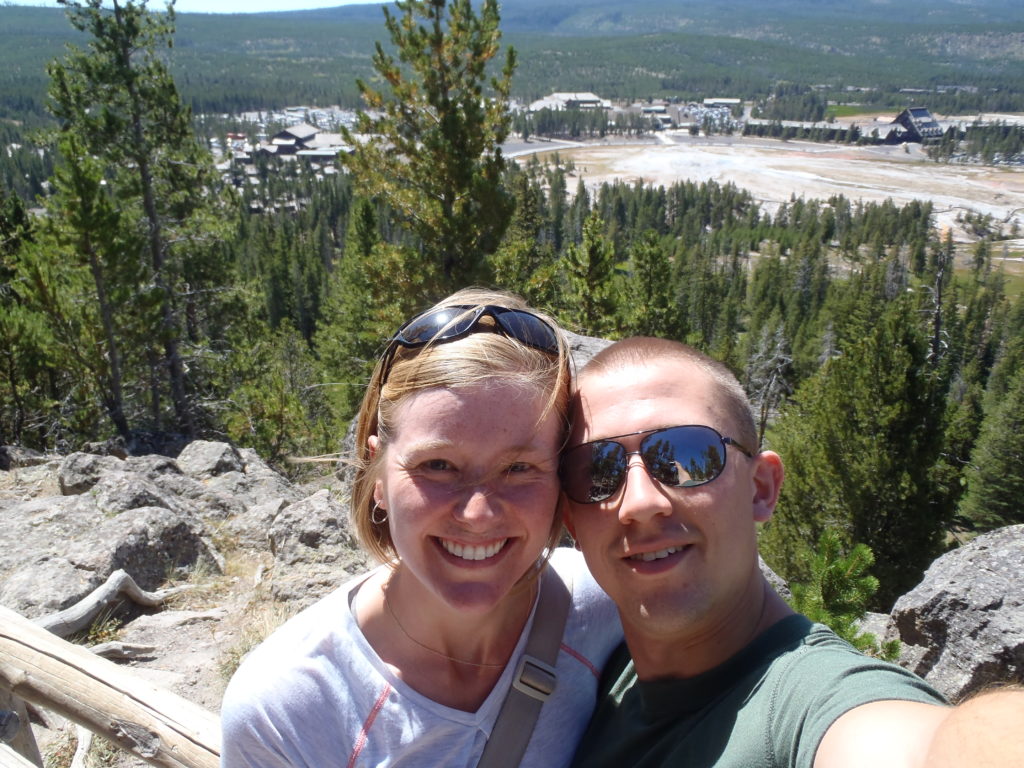
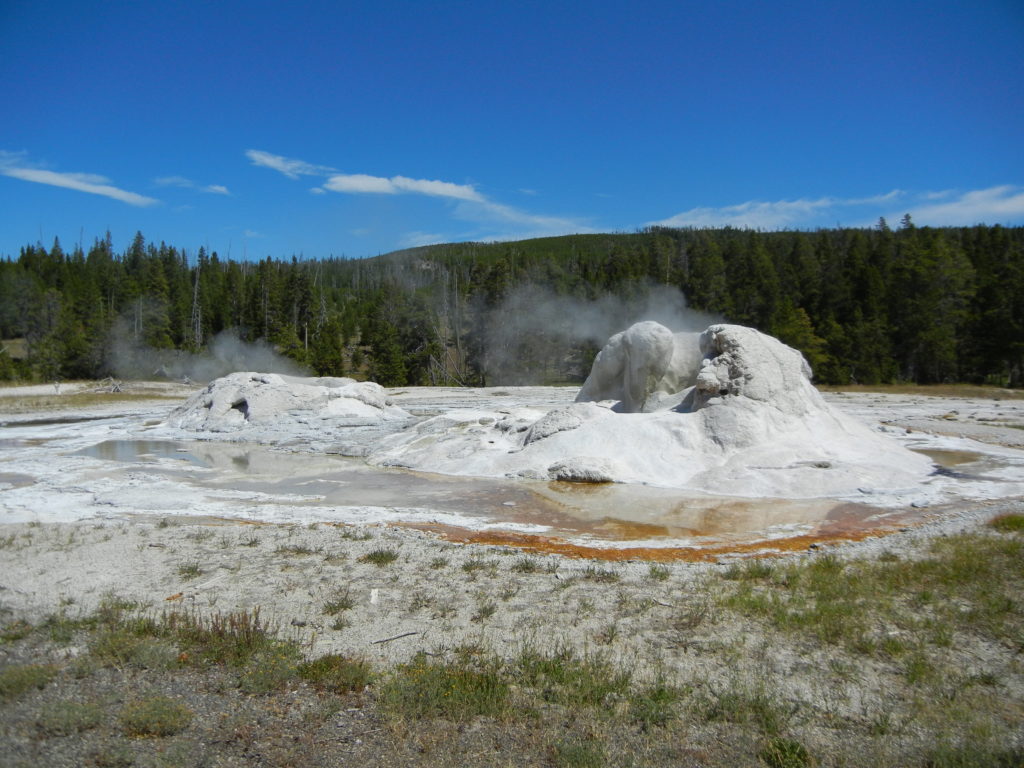
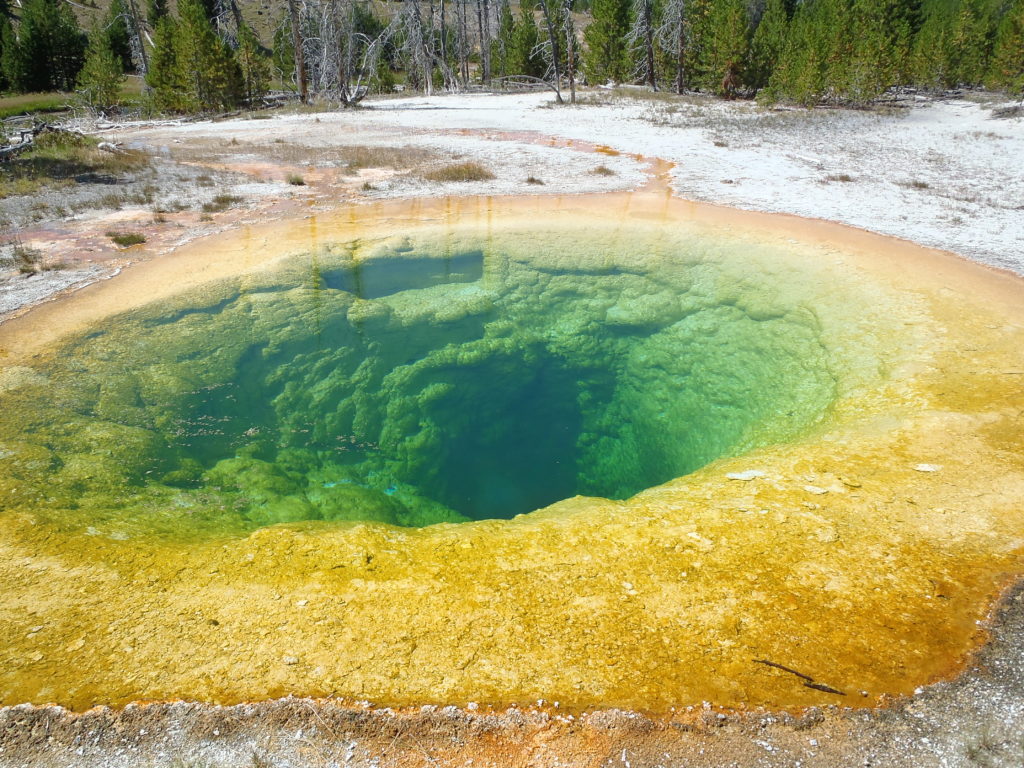
And after spending hours in the hot sun (no shade here, folks!), it was time for one of my favorite past times: enjoying a beverage in a National Park lodge. The Old Faithful Inn is one of the few remaining log hotels in the U.S. completed in 1904 with gigantic proportions: 700 feet long and seven stories high! You can stand in the lobby or walk up a gnarled log staircases as we did!
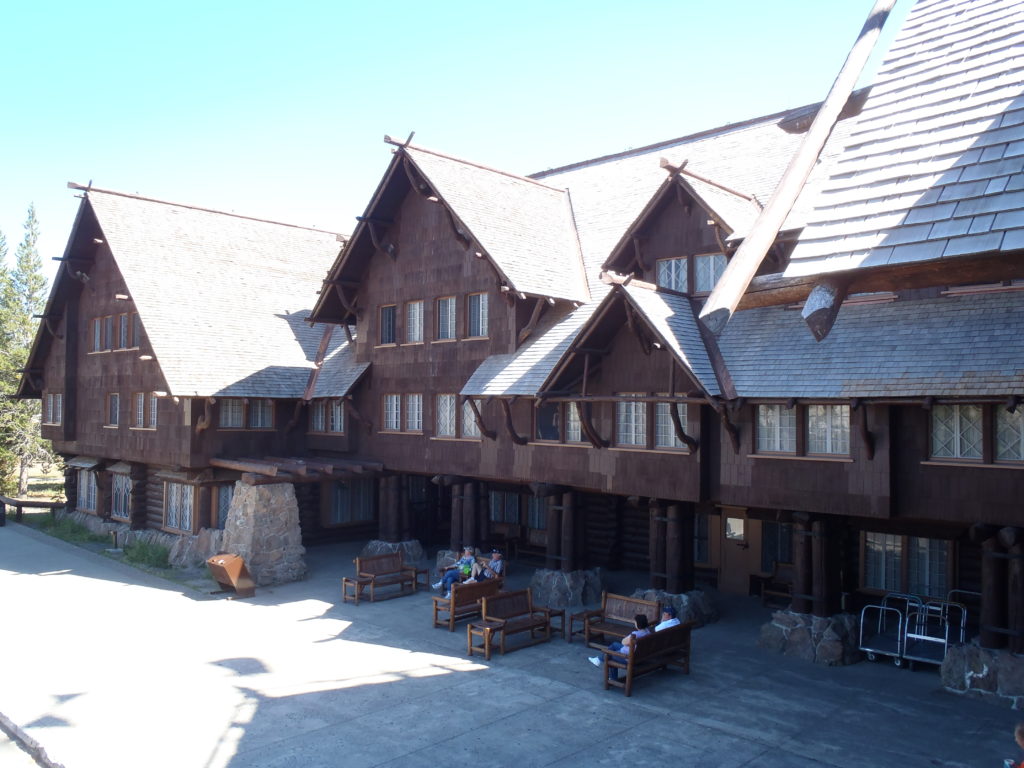
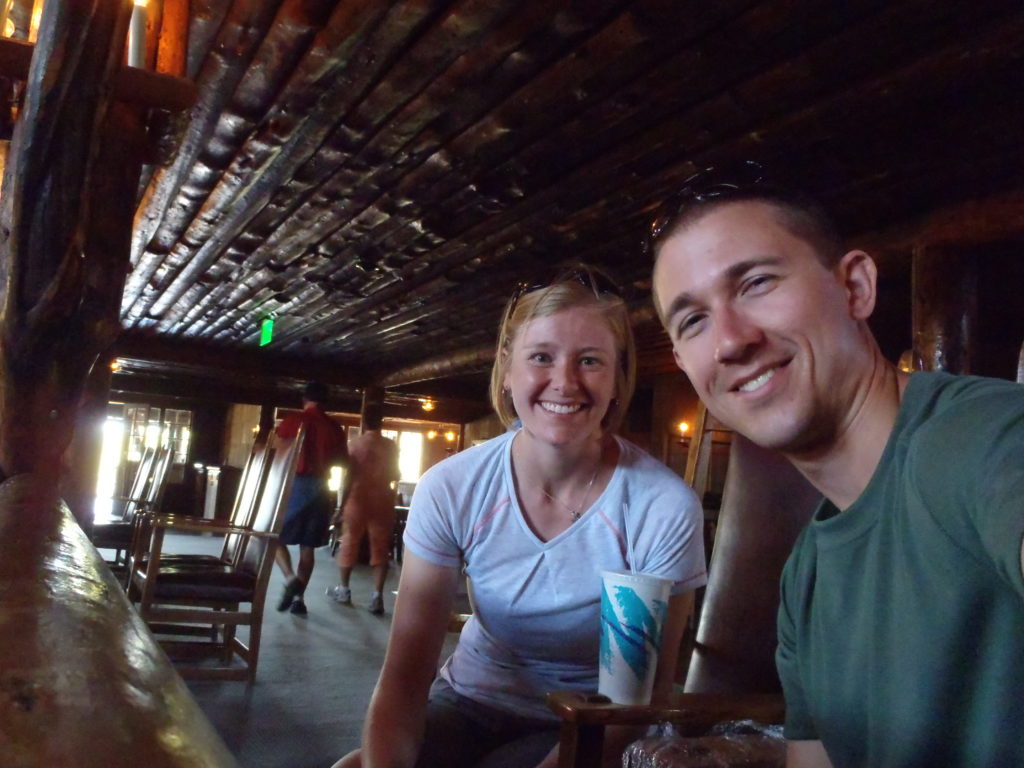
It was just the respite we needed to carry on East to the West Thumb and Lake Village. I don’t mean to brag, but coming from the Great Lakes, it takes a lot to impress us with a lake, though we did enjoy a brief walk through Lake Lodge. And wanting to complete the loop, we headed north on Grand Loop Road, Fishing Bridge-Canyon to Mud Volcano Trail. It was a great ending trail to conclude the experience of this eerie, alien landscape. Yellowstone itself is a volcano and when it erupted 640,000 years ago, left an enormous depression called the Yellowstone Caldera, which we have been circling the last 2 days. This easy 0.6-mile loop trail of boardwalk and pavement is the final reminder of the active earth beneath us.
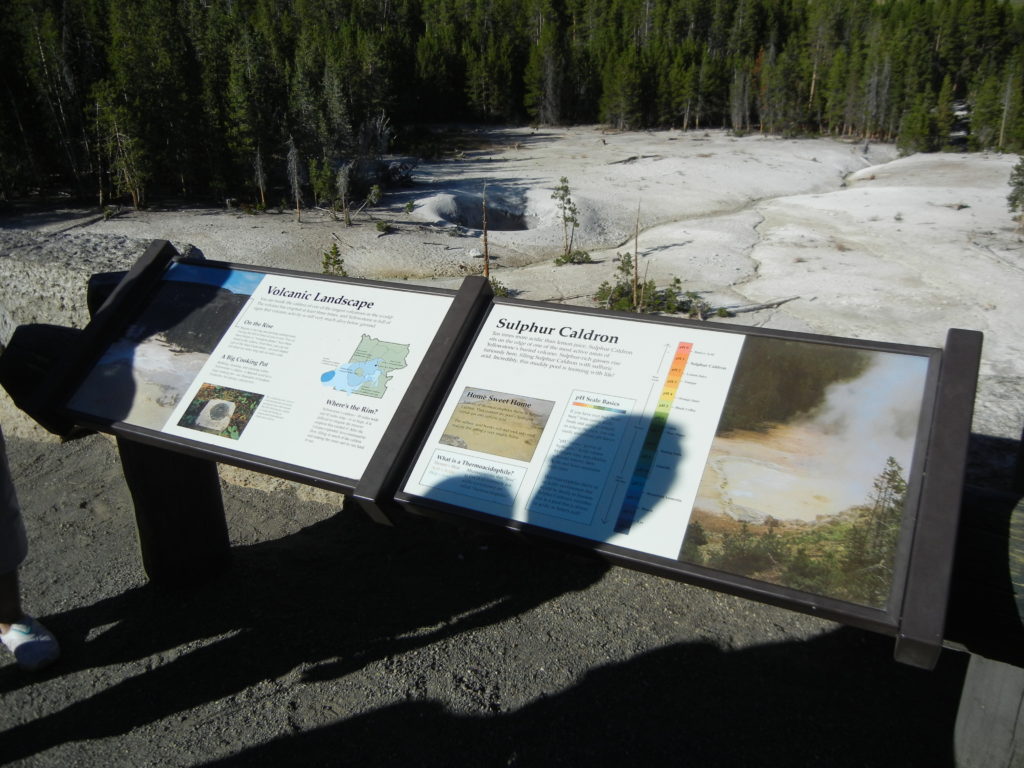
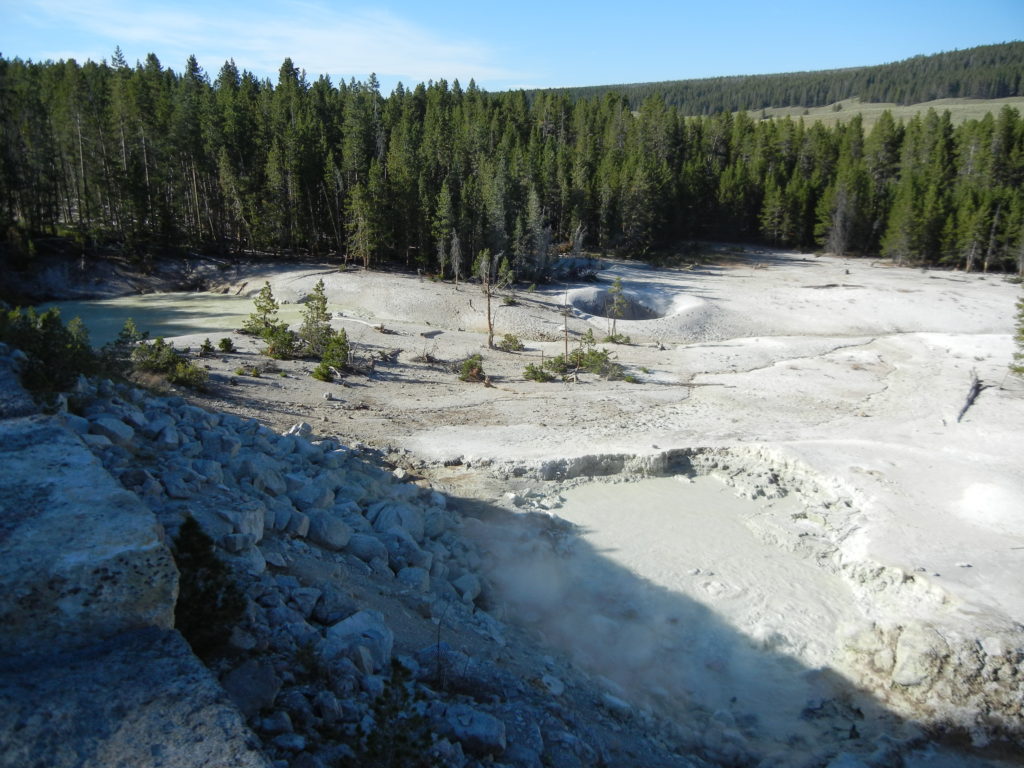
Our final leg of the loop took us through Hayden Valley along the Yellowstone River. This was a picture perfect ending of the park as we watched bison herds in the verdant landscape with wispy clouds in the crystal blue sky.
Most people will spend a week in this great park. With only 2 days, we effectively sprinted through it which left an even more intense impression in our minds. This park has something for everyone: mountains, valleys, lakes, waterfalls, geysers and hot springs; big mammals, majestic birds and colorful bacteria. Interest abounds in Yellowstone and will certainly leave an impression on anyone who visits for any duration at any time of year.
